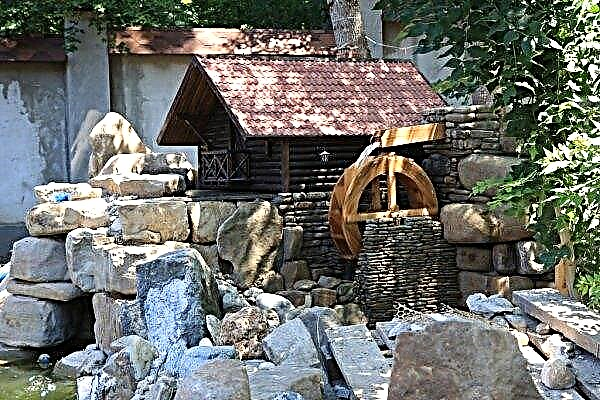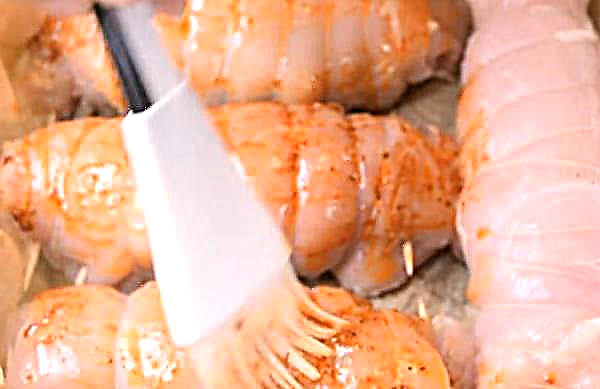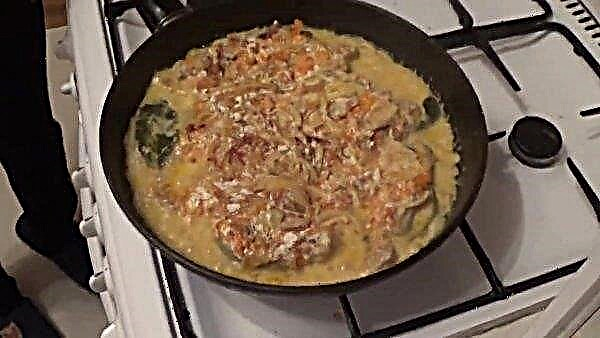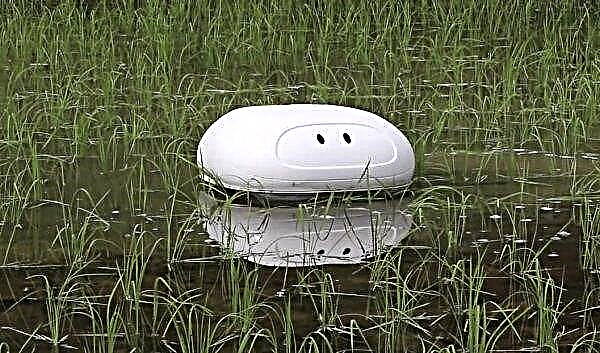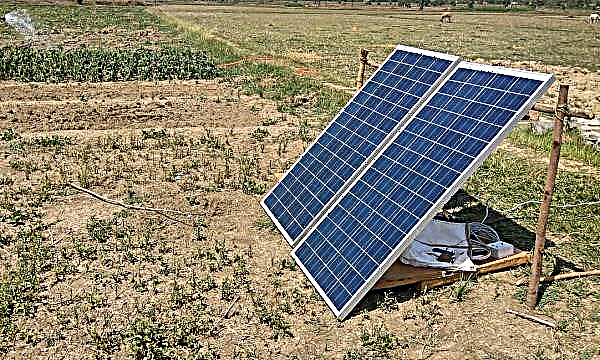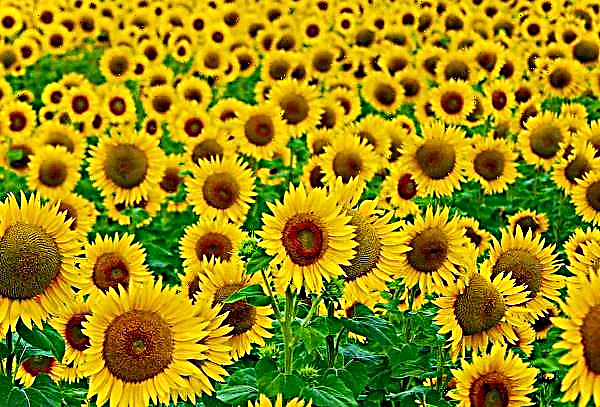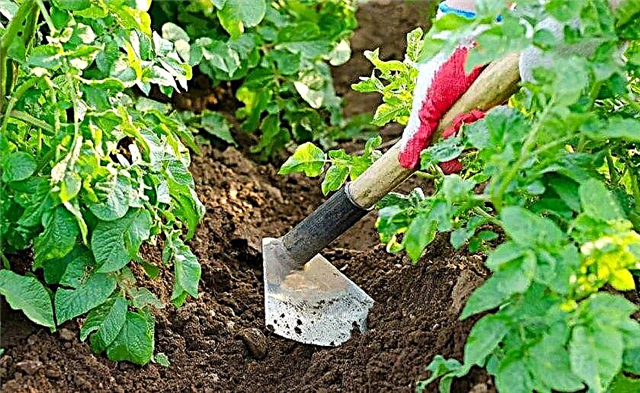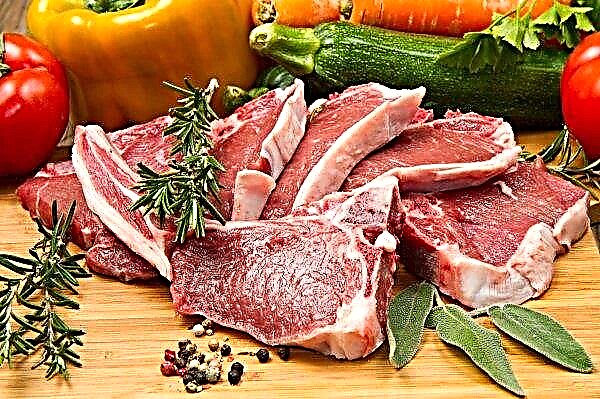In the era of medieval knights, large, massive horses were valued. Among all the heavy-carrying breeds existing in Europe at that time, Percheron was preferred, since these horses could easily withstand the weight of a knight in armor and transported heavy loads without much difficulty. Nowadays, in the era of automobiles and other types of transport, heavy-duty Percherons have faded into the background. Nevertheless, they continue to be actively bred and used around the world. About the features of the breed and its breeding at home - further.
History of occurrence
There is no consensus on the history of origin. Some believe that the progenitors of Percheron appeared on French lands sometime in the 8th century AD after a mare brought from Brittany (north-west of France) was mated with an Arabian stallion.
 Others are inclined to believe that the breed is not so ancient and appeared only in the XIX century, but also from the crossing of Arabian horses with local heavy trucks. The special climate of the province of Perche and the abundance of food allowed the formation of a powerful, but at the same time elegant horse - the pride of France.
Others are inclined to believe that the breed is not so ancient and appeared only in the XIX century, but also from the crossing of Arabian horses with local heavy trucks. The special climate of the province of Perche and the abundance of food allowed the formation of a powerful, but at the same time elegant horse - the pride of France.
In Russia, heavy horses were always in price. The first tribal Percheron on its land came at the end of the XIX century. Since that time, the Khrenovsky stud farm took up his breeding. Later, other local stud farms took up the job. The greatest success was achieved at Oktyabrsky, having managed to maintain the thoroughbredness of the breed (while the rest were engaged in the breeding of new heavy-breed breeds). Today, on a previous scale, no one is already breeding a breed in the Russian Federation, since this business has passed from state to private. The last pedigree producer was imported from France in 1991.
Did you know? In the States, Percheron appeared in 1839. In 1930, after the census, there were more than 33,000 individuals in the country. The second world and active mechanization of production significantly reduced the number of livestock. In 1954, the minimum number of Percheron individuals in the United States was recorded - 85. Now their population is gradually recovering, but it is still far from the scale of the thirties.
Breed description
The presence of the blood of Arabian horses gives the Perchersons dryness, mobility and grace, which is absolutely not characteristic of heavy horse breeds. Their croup is massive and wide, but it does not look heavy. Nevertheless, the power and strength of the animal can be traced in every part of its exterior. Perchers, in comparison with the Belgian breed of heavy trucks, poorly transfer their qualities when crossed.
Appearance characteristic
At home, the heavy truck is divided into three subspecies: large, medium, small. Small and medium are used for riding in tourism, for teams. Large ones are used for their intended purpose - moving heavy loads. The most popular is the middle subspecies. The main characteristics of the breed are given in the table:
The main characteristics of the breed are given in the table:
| Appearance | Description |
| Height at the withers | 155-185 cm (in France), 168-180 cm (in the USA), 165-168 (in Britain) |
| Torso length | 169 cm (for both sexes) |
| Chest circumference | 197 cm (females), 202 cm (males) |
| Metacarpal circumference | 22.7 cm (females), 24.4 cm (males) |
| Suit | main: gray in apples; often found gray, black, rare: red, roan |
| Head | small, with a straight profile, wide forehead |
| The ears | small |
| Eyes | large, slightly convex |
| Neck | massive, muscular, moderate length, with a beautiful bend |
| Mane | thick, lush and long |
| Withers | slightly raised |
| Croup | long, even, forked |
| Tail | low set, thick and long |
| Back | short, muscular, well set |
| Chest | deep wide |
| Legs | medium length, muscular, strong, with standard forearm sizes, but with a short and strong metacarpus |
| Hooves | wide, durable. |
Some people think that perchers are the highest horses in the world. But in the Guinness Book of Records, the height record belongs to the Shire breed (English heavy truck). Its representative - Big Jake - got into the book of records in 2010 (with an increase of 219 cm). The average growth of the breed is 165-185 cm. Among the Perchers, Dr. Le Gers (1902) with a height at the withers of 213.4 cm and a weight of 1,370 tons is also noted there. Therefore, the title of the highest belongs to the English breed.
Productive qualities
Persheron is one of the most popular French horse breeds. Such popularity was due to the characteristics of the breed:
- endurance;
- dry physique;
- harmonious proportions;
- massiveness, muscularity;
- agility, maneuverability, grace;
- softness of travel.
The largest individuals help to move weights (wagons, trams, plows, carts) in rural areas or in difficult places. So, in Disneyland, in Paris, these horses not only ride children in carts, but also help to get trams stuck in the park. The British use them for advertising, in forestry and farming. A calm disposition allows the wide use of perchers in circus performances.
A calm disposition allows the wide use of perchers in circus performances.
Character
There is an opinion that the more massive and stronger the animal, the less agile and smart. You can’t say the same about French beauties. They are calm, balanced, patient, as befits a majestic animal. His mobility, quick reaction, and ability to make decisions independently are simply amazing.
Photo gallery
Advantages and disadvantages of the breed
- The positive features of the breed include:
- mild stroke (regardless of the gait);
- unpretentiousness;
- calm disposition and great mind;
- quick adaptation to any conditions;
- power, stamina;
- high working capacity;
- good immunity.
- There are also disadvantages:
- late maturity (as with all heavy trucks);
- due to the large dimensions are difficult to manage;
- if you do not combine proper nutrition with physical activity, then they are able to gain excess weight.
Breeding Features
French beauties do not need special conditions of detention. Nature did not endow them with the capriciousness inherent in many purebred horses. But they still need a minimum of comfort.
Stable Requirements
Perchersons are far from small animals, therefore, when constructing a stable, one must take into account that they require much more free space than other horses.
In cold weather, it is more convenient to keep them in a stall, the dimensions of which should be 370 x430 cm. The height of the ceiling should be maximum. This will provide good ventilation. It is desirable that there was a continuous wall in the stall, turning into a wooden crate. This design of the walls will protect the animal from possible draft, will not close the review and create obstacles for communication with their relatives.
Comfortable temperature is 5-15 ° C, and humidity is 70%. To maintain the necessary microclimate, it is advisable to insulate it during the construction of the stable, especially in regions with cold winters. So that the horse does not suffer from hoof diseases, the floor in the stall is covered with a layer of sand, peat, straw or sawdust. This litter will provide dryness. Sources of daylight in warm time are windows; in the cold, lamps come to their aid, creating illumination of 150-200 lux.
Sources of daylight in warm time are windows; in the cold, lamps come to their aid, creating illumination of 150-200 lux.
Feeding ration
Since perchers are workhorses, the amount of feed they use should directly depend on their physical activity. The more they work, the more varied and nutritious food should be. Regardless of the load, they need to be fed three to four, or even five times a day.
When young greens appear, the horses are taken out to pasture. As additives to green fodder, they are given compound feeds, vitamins and minerals. In winter, grass is replaced by hay, straw. Such a massive animal should receive at least 20 kg of hay for every 0.5 tons of its weight. Both winter and summer menus need to be diversified with concentrates, root crops, roughage. Be sure to give meat and bone meal, Pancake week cake, lick.
Important! Like all heavy carriers, perchers are prone to obesity, so they need daily physical activity. In summer it can be a normal grazing, in winter - 12-km walks or work.
To maintain water balance, the horse needs 4-5 buckets of water per day. In hot weather, its amount doubles.
Young growth must be grazed. They should spend half a day in the pasture, eating fresh grass, the other in the stall, on dry feed. In the summer, their menu should include clover and medunica. At the age of 15-19 months, oats are introduced into the diet. Feed 5-6 times a day. In addition to grass, they give roughage, root crops and concentrates. Any horse must not be given:
Any horse must not be given:
- fresh bread;
- vegetables (exception — carrot);
- fruits (except apples, watermelon);
- dried fruits;
- sweets;
- wheat
- corn;
- barley.
Care and hygiene
To maintain cleanliness in the stable, every day you need to clean the excrement and wet litter. Once every seven days, the stables are thoroughly cleaned with disinfectants. Disinfectants also lie down feeders and drinking bowls.
The purity of the animal is the key to its health. Horses are cleaned every time they are taken out of the stall, and after a busy day, before entering the stall. When you tidy up the horse’s coat with a brush, you not only remove dust, dirt, litter, but also massage the skin, improving blood circulation. During this procedure, you can detect abrasions or other flaws on the skin, and treatment should be done in a timely manner. The mane and tail require special attention. They need to be combed thoroughly. Inspect and clean the ears, nostrils. In hot weather, bathing is absolutely necessary, and after hard work - a contrast shower.
Video: Horse Shine
Hooves are subject to regular inspection and cleaning. Clean them with a hook and brush. Also inspect the legs for abrasions, swelling, wounds. Teeth are inspected once every seven days. It is important to notice the inflammatory process on the gums in time in order to prevent the development of serious diseases.
Important! If any problem with the teeth has been discovered, you must urgently call a veterinarian.
Pregnancy and childbirth
Heavy trucks carry and give birth to foals, as a rule, easily, without complications. To do this, you need to take good care of the female, providing her with proper nutrition. Only the highest quality feed should be present in her diet, and in the last trimester also very nutritious. The share of roughage in the menu is minimized. Food is served in small portions, but often.
 Due to the massive physique, it is not always possible to determine in time that the mare is pregnant, and improper care can adversely affect the development of the fetus. Therefore, it is extremely important to monitor the behavior of females.
Due to the massive physique, it is not always possible to determine in time that the mare is pregnant, and improper care can adversely affect the development of the fetus. Therefore, it is extremely important to monitor the behavior of females.
If their appetite increases, they begin to protect the territory and show aggression towards relatives, then pregnancy has come. To clarify the situation, it is necessary to do an ultrasound and donate blood for tests.
Pregnancy in mares lasts 340-350 days, but deviations are possible. They can be provoked by the foal sex, season and diet.
Disease prevention
The immunity of the French heavy truck is quite strong, so its diseases are not often overcome. In order to minimize the likelihood of a particular disease, it is necessary to properly care for the animal. Regular cleaning of the skin will save the horse from skin diseases. Even if a problem arose, then in this case it will be timely detected and suppressed at an early stage of development.
Did you know? In 1990-2000 St. Petersburg beer company for advertising purposes has acquired four stallions of Percheron breed. Muscular handsome men were harnessed to a cart, in which lay a barrel of company beer, and traveled with them around the city. The company later bought several females to breed.
Mowing wool in winter will also help to avoid the manifestation of various infectious ailments. It is equally important to monitor the equipment of the horse. An improperly fitted saddle or harness can easily provoke skin diseases.
You should also carefully monitor the diet, then the digestive system will be all right.
Prospects for Horse Breeding Percheron
Versatility is a great advantage for perchers. A big plus for them is their unpretentiousness in maintenance, so such a horse is very useful in the household. But the price is high.
In order for the keeping of the animal to be recouped, it is more expedient to start it in those farms located in the rural outback, and where road transport cannot reach, and the need for traction is very high. In this case, the horse will become an indispensable assistant in the performance of heavy work of any complexity. It is believed that heavy trucks in the modern world are inferior in popularity to horses. Because of their massiveness, they cannot compete in races. But this is not about percheron. Although riding horses will not succeed, but in other equestrian sports, where they need strength, they have no equal.
It is believed that heavy trucks in the modern world are inferior in popularity to horses. Because of their massiveness, they cannot compete in races. But this is not about percheron. Although riding horses will not succeed, but in other equestrian sports, where they need strength, they have no equal.

